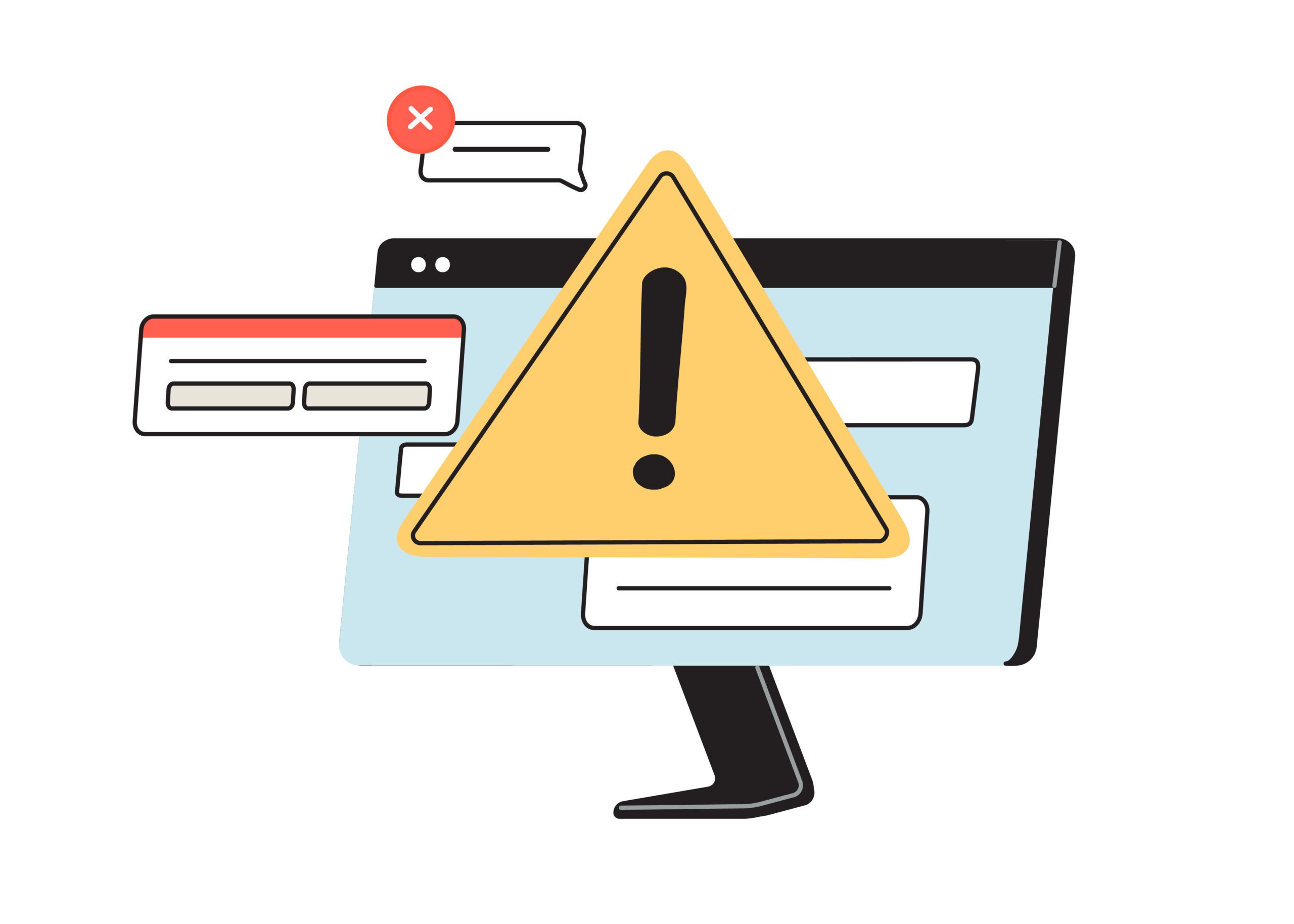Google Search Privacy: How To Keep Your Personal Information Out Of Sight

Google search is an integral part of the Internet as it provides users with access to a vast array of information. As a result, it is important to be aware of the potential privacy risks associated with using Google Search.
This article will explore how users can take control of their Google search privacy by removing personal information from search results and monitoring their online presence. It will also discuss strategies for maintaining privacy and monitoring Google search results to reduce the risk of having personal information exposed.
– To learn about how to keep yourself from being found on Google, check these articles by InternetPrivacy:
How To Remove Your Name From Google’s Search Results
How To Remove My Name From Google Search For Free: Scrub Your Identity Off The Internet
The Right To Be Forgotten On Google
Understanding the Potential Risks to Privacy in Google Search
Google collects and stores personal information from its users through its search engine. It indexes and records the search queries, including personal data like name, address, or other identifying information.
These records can be used to create a user profile and can have serious consequences for privacy if accessed by unauthorized parties. As such, it is important to know the potential risks of revealing personal information in Google searches.
How Google Collects and Stores Personal Information
With the expansive use of the internet, it is essential to understand how Google collects and stores personal information. Google uses various methods to collect and store personal information, such as collecting information about users’ activities on its services, using tracking technologies, and even collecting information from third-party sources.
| Information | Method of Collection | Storage |
| Activities | Tracking technologies | Cloud |
| Third-party sources | Cookies and web beacons | Database |
| Location | GPS technology | Server |
Google collects and stores data such as IP addresses, search queries, and browsing history. This data is stored in the cloud, databases, and servers. Google also uses cookies and web beacons to track user activities across its services and to target advertisements. Additionally, Google uses GPS technology to track and store the location of its users. Collecting and storing this data allows Google to customize its services and make them more useful and relevant to users.
The Consequences of Having Your Personal Information Indexed by Google
Having one’s personal information indexed by a major search engine can have far-reaching implications for one’s privacy. The most obvious consequence is that anyone with internet access can find personal information about an individual, such as their name, address, phone number, and other contact information. This can lead to unwanted contact from strangers or even malicious actors.
Additionally, having personal information indexed by Google can lead to targeted advertising, as companies can use the information to tailor ads to an individual’s interests.
Another consequence of having personal information indexed by Google is that it can be used to track an individual’s online activities. This can be done by tracking the IP address associated with a search query or by using cookies to track a user’s browsing habits. This can lead to a loss of privacy, as companies can use this information to build a profile of an individual’s interests and activities. Furthermore, this information can be used to target an individual with specific ads or content.
Taking Control of Your Google Search Privacy
Google search is a powerful tool for finding information and connecting with the world, but it can also make personal information vulnerable to misuse. To protect their privacy, users can take several steps to control their Google search results.
These steps include adjusting their Google account privacy settings, activating Google’s SafeSearch feature, and utilizing private browsing and incognito mode. Each of these measures can help protect the user’s personal information from prying eyes.
Adjusting Your Google Account Privacy Settings
Adjusting your Google account privacy settings is essential to protecting your personal information from public view. Setting up these settings involves utilizing the Google Account Privacy Checkup tool, which can be accessed by logging into the Google Account page.
This tool allows users to review their privacy settings, examining options such as the data shared publicly and what data is used for targeted advertisements. Additionally, Google offers a variety of other privacy settings, including an option to limit the amount of targeted ads shown and the ability to review and delete search history.
Furthermore, users can also take control of their data by understanding what information is being collected and how it is used. It is important to know that opting out of Google’s data collection does not necessarily provide complete privacy, as third-party apps and websites may still have access to user information.
Activating Google’s SafeSearch Feature
Activating Google’s SafeSearch feature can help users ensure their online searches are conducted in a secure environment. When this feature is enabled, Google filters out explicit content from the search results, helping users avoid potentially offensive material while searching the web.
SafeSearch can be activated directly from the Google search page. A user must simply click the gear icon at the top right-hand corner of the search page and select “Search Settings”. In this section, the user can enable the “Filter explicit results” option, thus enabling SafeSearch.
Additionally, users can enable SafeSearch from their Google account settings. This can be done by selecting “Search Settings” from the “My Account” menu and then selecting “On” from the SafeSearch options.
Enabling SafeSearch helps users maintain their online privacy and security by ensuring that potentially sensitive search results are invisible. It is important to note that SafeSearch is not a fool-proof security measure and can be bypassed by disabling the settings. Therefore, users should take additional steps to ensure online privacy, such as utilizing a virtual private network (VPN).
VPNs encrypt web traffic, making it difficult for third parties to access user data. In addition, users should always be mindful of the information they post online, as it can be used maliciously.
Utilizing Private Browsing and Incognito Mode
Online privacy and security can be maximized by using private browsing and incognito mode. Private browsing and incognito mode enables users to browse the Internet without leaving any trace of their activity. This type of browsing can be particularly useful when searching for sensitive topics.
Private browsing and incognito mode have several benefits for users:
- Data Protection: Private browsing and incognito mode help protect user data from being collected and stored by websites. This prevents websites from tracking user activities and selling user data to third parties.
- Secure Login Information: Private browsing and incognito mode also help prevent users from stealing their login information. Using private browsing and incognito mode, users can ensure their passwords are not stored and their accounts are not hacked.
Private browsing and incognito mode are essential tools for protecting user privacy and security when browsing the Internet. By leveraging these tools, users can keep their data and login information safe and secure.
Strategies for Removing Personal Information from Google Search Results
Removing personal content from the internet can be difficult, but it is possible through various methods.
Directly removing personal information from websites is the most effective way, but it can be time-consuming.
Alternatively, content can be removed from Google search results through the request form available on the Google website.
It is also important to understand the ‘Right to Be Forgotten’ and its limitations in the European Union, as this can be used as an additional tool for removing personal information from Google search results.
Removing Personal Content Directly from Websites
Directly removing personal content from websites is an important step in protecting personal information online. If personal content exists on a publicly available website, it can be indexed by search engines, such as Google, and made available to the public. This content can include photos, videos, blog posts, comments, forum posts, and many other types of digital media.
The best way to remove personal content from websites is to contact the website administrators to request that the content be removed. It is important to be persistent in this process, as website administrators may not respond to the initial request. If the website administrators do not respond, then it may be necessary to contact the hosting provider of the website to have the content removed.
In some cases, removing the content directly from the website may be possible without involving any third parties.
Requesting Content Removal Through Google
Requesting the removal of content from websites through Google can be an effective way to protect personal information online. Google provides a comprehensive online tool to help users remove unwanted content from the web, including content that may contain sensitive personal information.
This tool can be accessed through the “Remove Outdated Content” feature in Google’s “Search Console”. Google’s “Search Console” is a web-based tool for managing and monitoring Google search results.
Once the “Remove Outdated Content” feature is accessed, users can select the type of content they wish to have removed from Google’s search results. Additionally, users can submit a request to have Google remove personal information from their search results.
Google will then review the request and, if deemed appropriate, remove the content from their search results. This process can help protect personal information from being accessed through a Google search. Additionally, it can help safeguard against potential identity theft or other malicious use of personal information.
Understanding the ‘Right to Be Forgotten’ and Its Limitations
The ‘Right to Be Forgotten’ concept allows individuals to have certain personal information removed from search engine results. This concept originated in Europe due to the European Union’s Court of Justice ruling in 2014. The ruling gave individuals the right to request the removal of personal information from search engine results if the information is outdated, irrelevant, or excessive. This right is limited to search engine results appearing in the European Union, as it is not recognized by other countries.
The ‘Right to Be Forgotten’ has some limitations that should be considered. For example, it does not guarantee that personal information will be removed from all search engines. Additionally, removing the information from search engine results does not guarantee it will no longer be available online. Furthermore, the individual must prove that the information is outdated, irrelevant, or excessive to make a successful request for removal.
| Limitation | Solution |
| Not guaranteed removal from all search engines | Request removal from multiple search engines and contact website owners to remove the information directly from the website. |
| Information may still be available online | Use privacy settings on social media and other online accounts to control who can view personal information. |
| Search for privacy laws in other countries to learn about the rights and limitations of data removal. | Gather documentation to support the request, such as media reports, court documents, or police records. |
| Not recognized outside the EU | Search for privacy laws in other countries to learn about the rights and limitations for data removal. |
Maintaining Your Online Privacy and Monitoring Your Google Search Presence
Maintaining online privacy and monitoring one’s Google search presence is important to protecting personal information. Regularly reviewing and managing one’s digital footprint is a key step in this process, as is implementing best practices for keeping personal information secure.
An additional option to consider is the use of alternative search engines which can offer enhanced privacy features.
Regularly Reviewing and Managing Your Digital Footprint
A digital footprint is the trail of data an individual leaves behind while using the internet. It includes everything from online searches and comments to browsing history and cookies.
To protect your personal information, it is important to review and manage your digital footprint regularly. This can be done by reviewing the data you are sharing, deleting data that is no longer needed, and using the appropriate security settings to limit the amount of data that is shared with third-party sites.
Additionally, it is important to know what third-party sites are collecting and what they are doing with your data. Regularly reviewing and managing your digital footprint can keep your personal information out of sight and reduce the chances of misusing it.
Implementing Best Practices for Keeping Your Personal Information Secure
Implementing best practices for securing one’s personal information is essential for protecting sensitive data from misuse. It is important to be mindful of the data shared online, whether on social media, search engines, or other websites.
To ensure that one’s personal information is safe, the following steps should be taken:
- Use strong passwords and change them regularly.
- Use two-factor authentication when available.
- Use a secure VPN to protect data when using public Wi-Fi.
Considering Alternative Search Engines for Enhanced Privacy
Considering alternative search engines can be beneficial for maintaining enhanced privacy. Searching with a different engine than Google can help reduce the amount of personal information collected and stored by the search engine.
Several alternative search engines exist, such as DuckDuckGo, which are designed to keep personal information private and out of sight. DuckDuckGo does not track users or store their personal information, and it does not use targeted advertising. Additionally, Bing and Yahoo are two other search engines that prioritize user privacy and do not track user information or store personal data.
Using one of these alternative search engines instead of Google can help to ensure that personal information is more secure and is not collected by a search engine. Additionally, these search engines provide a variety of features that can be beneficial for maintaining privacy, such as the ability to search for specific topics without leaving a trace or storing personal information.
Furthermore, these search engines also provide additional security features such as encryption and privacy settings that can help to protect personal information. Ultimately, using alternative search engines can be beneficial for maintaining privacy and keeping personal information secure.
Conclusion
Google search is an invaluable resource, yet it can also pose a risk to personal privacy if one’s information is not properly secured. Taking control of one’s Google search privacy requires understanding the potential risks and implementing strategies for removing personal information from search results.
This includes changing privacy settings, removing personal information from social media, and monitoring one’s online presence. Protecting one’s privacy online is an ongoing process, yet it is a necessary step to keep one’s personal information out of sight.
With the right understanding and the right steps, one can easily secure their personal privacy when using Google search.





